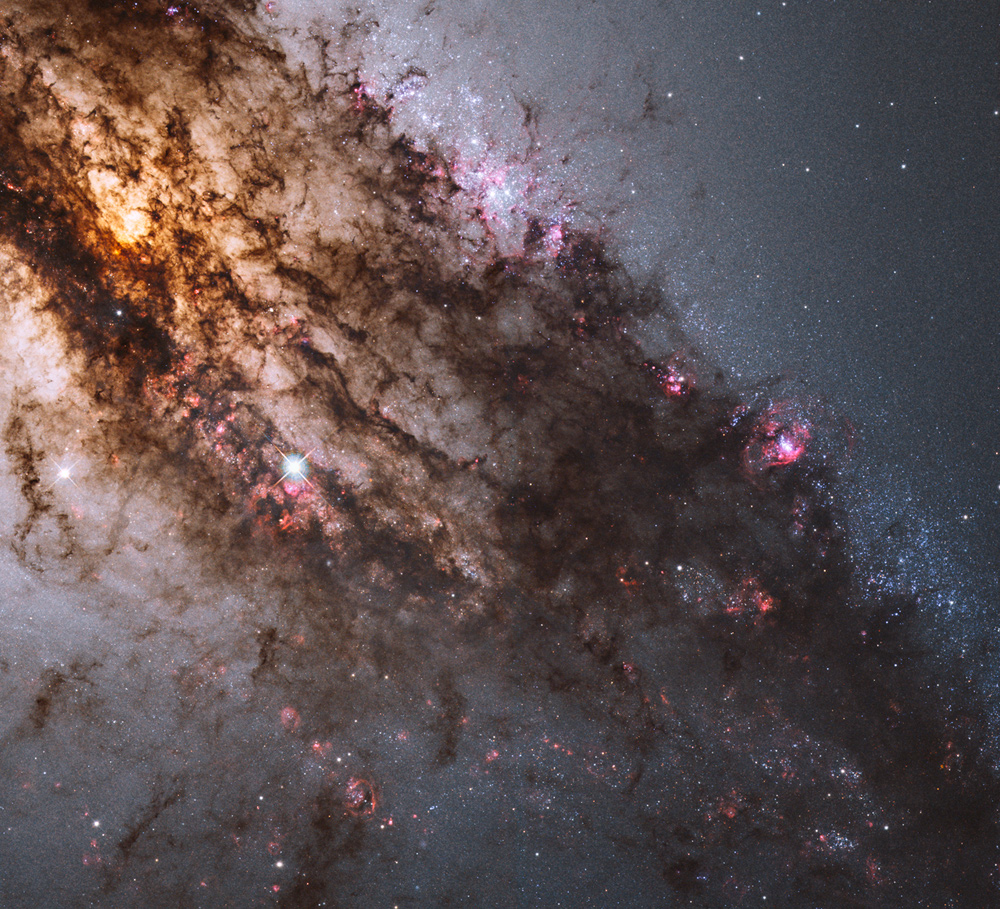FEBRUARY 22, 2020
Central Centaurus A
EXPLANATION
A mere 11 million light-years away, Centaurus A is the closest active galaxy to planet Earth. Also known as NGC 5128, the peculiar elliptical galaxy is over 60,000 light-years across. A region spanning about 8,500 light-years, including the galaxy’s center (upper left), is framed in this sharp Hubble Space telescope close-up. Centaurus A is apparently the result of a collision of two otherwise normal galaxies resulting in a violent jumble of star forming regions, massive star clusters, and imposing dark dust lanes. Near the galaxy’s center, left over cosmic debris is steadily being consumed by a central black hole with about 60 million times the mass of the Sun. As in other active galaxies, that process likely generates the radio, X-ray, and gamma-ray energy radiated by Centaurus A.
Image Credit
NASA, ESA, Hubble Heritage (STScI/ AURA)-ESA/Hubble Collaboration


